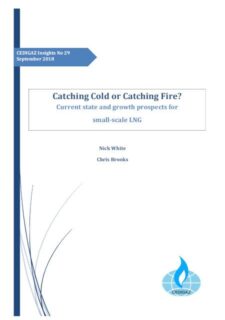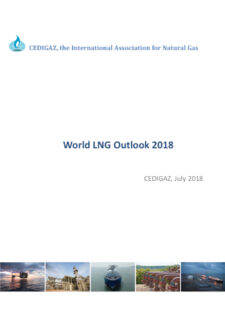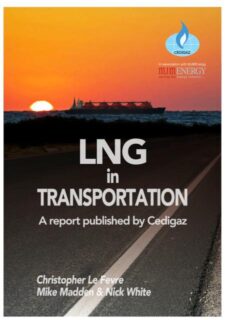LNG Markets

THE IMPACT OF NEW MARINE EMISSIONS REGULATIONS ON THE LNG MARKET
Cedigaz Insights N° 33 January 2019 20 pages PDF format
Change in IMO emissions standards from 2020 will have a huge impact on the maritime industry. This concise CEDIGAZ Executive Briefing provides insight on the following issues:
- What are the IMO emissions standards coming into force in 2020 and where do they apply?
- What are the possible options for ship owners?
- What are the opportunities for the LNG market?
- Current state of play – how is the industry planning for the 2020 regulations?

Catching Cold or Catching Fire? Current state and growth prospects for small-scale LNG
Cedigaz Insights N° 29 September 2018 105 pages PDF format
| Member | FREE | Login |
| Non Member | 1000 € |
The small-scale LNG market is rapidly growing on both the supply and demand side. Forecasts of growth to 2030 of up to 100 mt are widely shared, and there is a significant chance growth could far exceed this, with some forecasts for key sectors leading to a much higher overall demand.

Medium and Long Term LNG Outlook 2018
Outlook - June 2018 - PDF, XLS format
CEDIGAZ 2018 LNG scenario to 2040

How will LNG support Kuwait's energy transition?
Cedigaz Insights N° 26 February 2018 42 pages PDF format
| Member | FREE | Login |
| Non Member | 1000 € |
Kuwait is mostly known as one of the world's largest oil producing nations and as a leading member of OPEC. But the country was also a pioneer in 2009 when it became the first in the MENA region to import LNG via a floating storage and regasification unit. At the time, LNG was considered a stop-gap solution to address chronic electricity shortages that threatened Kuwait's economic and socio-political stability. Today, Kuwait continues to lead the way in the region by being the first LNG importer to invest in a land-based LNG import terminal. The 22 mtpa facility, for which construction has begun at Al Zour industrial area, is scheduled to come online in 2021. Cedigaz's latest report examines the risks and opportunities of Kuwait's LNG strategy.

Does LNG have a long-term future in the United Arab Emirates?
Cedigaz Insights N° 21 March 2017 30 pages PDF format
The United Arab Emirates (UAE) is one of the world's longest-established LNG exporters. But despite holding the world's sixth largest gas reserves, LNG imports into the federation increased at an impressive rate since 2010, when the Jebel Ali floating terminal in Dubai started up. With gas representing more than 90% of the power fuel mix, LNG purchases have been key to fill a widening supply deficit in order to match rapidly growing gas-to-power demand. Today, LNG remains at the heart of the UAE's strategy to meet rising energy consumption and support economic and industrial expansion in times of reduced oil income and budgetary constraints. Cedigaz's latest report examines the risks and opportunities inherent to this strategy and asks whether it is viable in the medium to longer term.

Waiting for the Next Train? An Assessment of the Emerging Canadian LNG Industry
Cedigaz Insights - Special issue March 2015 50 pages PDF format
In February 2015, Canada counted 22 LNG liquefaction plant projects – of which 17 are located in British Columbia – representing a total design capacity of 325 mmtpa. Canada has the potential to become a major LNG exporter but no project has received Final Investment Decision (FID) so far. Competition with US brownfield projects with innovative business models have limited the commercial appeal of many Canadian projects relying on oil indexation. More recently, plummeting oil prices have put into question their profitability and lead to several postponements of FID reviews. CEDIGAZ’s new report Waiting for the Next Train? An Assessment of the Emerging LNG Industry in Canada discusses the potential for Canada to export LNG, looking at the initial enthusiasm and wide support by public authorities and local communities but also at the economic challenges and commercial issues that are slowing the progress of these projects.

LNG IN TRANSPORTATION
Thematic studies October 2014 402 pages PDF format
LNG as a potential transport fuel, especially in shipping and trucking, is attracting considerable interest. This is mainly a reflection of the price advantage of LNG over oil based fuels, especially in the US where the shale gas revolution has driven gas prices to record lows. In the marine sector, the reinforcement of emissions regulations will force ship-owners to move to less polluting fuels or technology and LNG has a number of advantages over other compliance solutions. However, the development of LNG as a transport fuel faces a number of challenges and will have to go hand in hand with the development of fuelling infrastructure.



